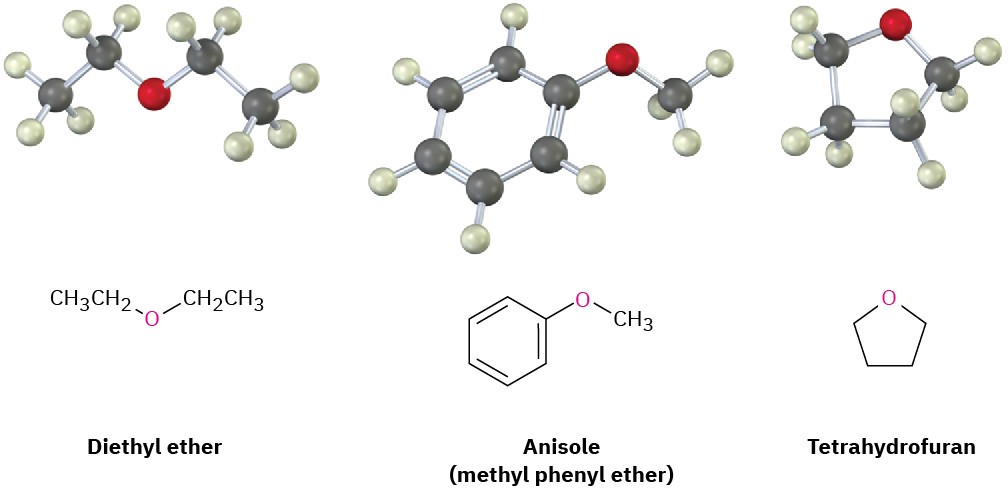18 Why This Chapter?

Figure 18.1 The appalling and unforgettable odor of skunks is due to a mixture of several simple thiols. (credit: modification of work “Striped Skunk” by Tom Friedel/Wikimedia Commons, CC BY 3.0)
This chapter finishes the coverage of functional groups with C–O and C–S single bonds that was begun in the chapter on Alcohols and Phenols. We’ll focus primarily on ethers and take only a brief look at thiols and sulfides before going on to an extensive coverage of compounds with C=O double bonds in Chapters 19 through 23.
Ethers (R–O–R′), like the alcohols we saw in the preceding chapter, are organic derivatives of water, but they have two organic groups bonded to the same oxygen atom rather than one. The organic groups might be alkyl, aryl, or vinylic, and the oxygen atom might be in an open chain or a ring.
Perhaps the most well-known ether is diethyl ether, which has a long history of medicinal use as an anesthetic and industrial use as a solvent. Other useful ethers include anisole, a pleasant-smelling aromatic ether used in perfumery, and tetrahydrofuran (THF), a cyclic ether often used as a solvent.

Thiols (R–S–H) and sulfides (R–S–R′) are sulfur analogs of alcohols and ethers, respectively. Both functional groups are found in various biomolecules, although not as commonly as their oxygen-containing relatives.

